12 December, 1976
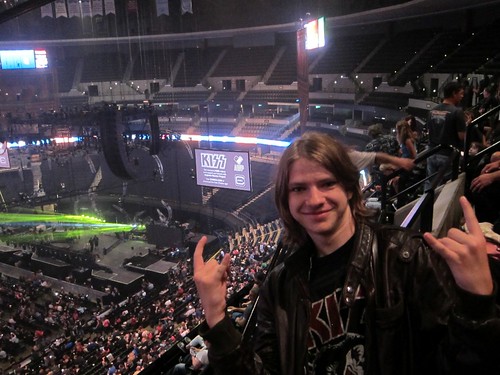 Fast forward 37 and a half years. Now, my son is a year older than I was back in 1976 and he's a bigger KISS fan than I ever was. At one point, I took him to see a tribute band that came through town, but it only depressed him because they didn't measure up and he never thought he'd see the real band. When KISS announced that they'd be coming through Denver for their Summer '14 tour, along with Def Leppard, Malcolm was psyched enough to pay for his own ticket and the two of us went together.
Fast forward 37 and a half years. Now, my son is a year older than I was back in 1976 and he's a bigger KISS fan than I ever was. At one point, I took him to see a tribute band that came through town, but it only depressed him because they didn't measure up and he never thought he'd see the real band. When KISS announced that they'd be coming through Denver for their Summer '14 tour, along with Def Leppard, Malcolm was psyched enough to pay for his own ticket and the two of us went together.


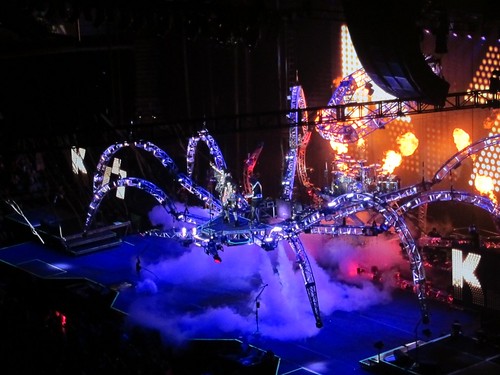
There are a few more photos at my Flickr.
I was miserable in December of 1976. My folks had divorced and my mom got a job in Lakeland FL, moving us a world away from my friends in St. Petersburg. I was 14 years old and pretty much on my own, except for the twenty-something guys in the apartment next door that I’d inflict myself on periodically. At that point, I mostly listened to older, less popular stuff. like Jefferson Airplane, Black Sabbath, and Iron Butterfly. I did have some more modern favorites, though: Pink Floyd’s Dark Side of the Moon and Queen’s A Night at the Opera.
Three months into this exile, a spark of excitement offered some reprieve. A friend of the family that my mom knew from high school, Bob Segars, came to town. This wasn't the guy from the Silver Bullet Band, but he was always good for some cool stories. Over dinner, Bob talked about working on the current KISS tour and he had brought me a stack of swag: an 8x10 of the band, a couple of T-shirts, and four backstage passes to see the band, who were coming to Lakeland in another day or two. This was great, but I wasn't really that into KISS. I had heard “Beth”, “Detroit Rock City”, and “Rock and Roll All Nite” before on the radio, but I remember being more excited about the chance to see their opening act, Uriah Heep.
Since I wasn't a big fan and I didn't really have any friends at school, I sold everything except one of the backstage passes. It was weird driving to the concert with these kids that I didn't even know, and even stranger to hang out with them as I met the incredibly friendly guys from Uriah Heep before the concert and soaked in the backstage ambiance. I watched their show from the wings and imagined playing for an audience like that. It was exhilarating. After they finished, as the roadies were swapping out the stage gear, all of us 'guests' were unceremoniously pushed away to the backstage hallways to clear room for KISS' limo to pull in. I watched the band jump out and run onstage from 30 yards away. Even after they started playing, we weren't allowed any closer, so I went out front.
Despite my unfamiliarity with the band, I could appreciate the spectacle of their show. The costumes and makeup had seemed silly before this, but now gave them a menacing presence. Gene Simmons sneered and did the tongue thing and the crowd went wild. A week or so before, I had been to my first concert, seeing Jeff Beck and Jan Hammer in Tampa. Beck had put on an great show and he could shred on guitar, but it was nothing like this. KISS took a theatrical approach well beyond their outfits; the lighting constantly shifted across the multi-tier stage, accompanied by flash pots and a wall of throbbing bass and screaming guitar.
When Ace Frehley plummeted down as he walked down the steps from the upper riser, none of us realized what was going on, but the show came to a screeching halt. It turned out that he had been badly shocked by the poorly grounded set and laid unconscious while the crew swarmed out to help him. The contrast between the wailing guitars earlier and the murmur of the worried crowd was a bit uncanny. Frehley was carried offstage and the hall cued up some music while we wondered if he was all right. We had no idea of what was going on. Was the show was over? After about 20 or 30 minutes, the band took the stage again and explained what had happened. They said that Ace was okay and wanted to finish the show. He still looked pretty shaky to me and, given the make up, I wasn't even entirely sure that it really was him onstage. A few songs in, though, the band recovered their focus and finished out a solid performance. Frehley later went on to write "Shock Me" for 1977's Love Gun.
25 June, 2014
 Fast forward 37 and a half years. Now, my son is a year older than I was back in 1976 and he's a bigger KISS fan than I ever was. At one point, I took him to see a tribute band that came through town, but it only depressed him because they didn't measure up and he never thought he'd see the real band. When KISS announced that they'd be coming through Denver for their Summer '14 tour, along with Def Leppard, Malcolm was psyched enough to pay for his own ticket and the two of us went together.
Fast forward 37 and a half years. Now, my son is a year older than I was back in 1976 and he's a bigger KISS fan than I ever was. At one point, I took him to see a tribute band that came through town, but it only depressed him because they didn't measure up and he never thought he'd see the real band. When KISS announced that they'd be coming through Denver for their Summer '14 tour, along with Def Leppard, Malcolm was psyched enough to pay for his own ticket and the two of us went together.
Walking up to the venue, we were surrounded by a legion of fans. We saw everything from little kids with meticulously applied makeup to adults sporting a casual star over their eye. Unlike that 1976 show, this one was reserved seating, so we took our time getting to our seats, feeding on the rising sense of anticipation. The opening act, Kobra & The Lotus had a good classic metal grind, serving well as an appetizer for the headliners. Unfortunately, their set ended with a whimper, as the mains blew on their last song and the volume faded out except for their monitors. As the crew tore down their equipment and started setting up Def Leppard's rig, the sound guys got the mains working and filled the hall with a random selection of between show songs (why was Elton John's "Love Lies Bleeding" on that playlist?).

By the time they got to The Who's "Won't Get Fooled Again", we were ready for Def Leppard to get playing. The lights dropped, but the song didn't fade; instead, Rick Allen took over the drum fills and led the band into taking over the tune to start the show. As they plowed through a run of hits from their back catalog, Joe Elliott's singing was top notch and the guitar work was phenomenal. Phil Collen and Vivian Campbell showed off how they've perfected their twin-guitar attack, and the way they transitioned from acoustic to electric on "Bringin' On The Heartache" was masterful. But as much as we enjoyed the set and the encore's "Rock of Ages", we were all ready for the main event.

At first, it looked like KISS might try a similar start to their show; the lights dropped during Led Zeppelin's "Rock and Roll", but the music cut out and we got a video short of the band wandering the backstage halls a la Spinal Tap. But this was just a distraction for the band to make their grand entrance on the back of a giant, articulated spider skeleton that embraced the stage. From that moment on, every movement was smoothly choreographed, from Gene Simmons' blood spitting Demon whizzing up into the air to mount the spider's back to Paul Stanley's zipline trip out to a small circular stage out in the middle of the audience. The pyrotechnics alone were impressive, from gas jet flames to Roman candles and spark sprayers.
It's hard to believe the band is celebrating 40 years of playing. Simmons showed his age a little, but could still exercise the creepy malice and wicked tongue of his youth. Stanley, on the other hand, still looked to be in his prime. It was impossible to believe that he's 62 years old as he dove into knee drops or posed gymnastically during his solos. His voice, too, sounded just the same as he enthusiastically talked to the crowd, whether acknowledging the fans' role in getting into the Rock and Roll Hall of Fame or talking about their earlier visits to Denver.
KISS' classic hard rock sound didn't deliver the technical flash that Def Leppard brought, but the music had a visceral punch of bass heavy drive and, just like in 1976, they aimed to stun the audience with overwhelming theatrics. The snowstorm and fireworks finale of "Rock and Roll All Nite" hit a climax of excess that left us drained and wrung out as we walked back to the car. As our ears rang and we held on to the adrenaline from the show, I had to tell my son that, as good as KISS was in 1976, this show was better. The band has honed their skills as performers and their budget and imagination have grown hand in hand. Malcolm may regret that he never saw the original line up, but he'll remember this show as a peak experience.
There are a few more photos at my Flickr.

 Wakka-wakka-wakka: that's the sound of the way-back machine transporting us across the decades, back to the golden era of jazz funk. lf I close my eyes it's like Lucky Peterson, the Average White Band, and the Atlanta Rhythm Section are all in their prime and a new, up-and-coming crew is stepping up to join their ranks. On their self-titled release,
Wakka-wakka-wakka: that's the sound of the way-back machine transporting us across the decades, back to the golden era of jazz funk. lf I close my eyes it's like Lucky Peterson, the Average White Band, and the Atlanta Rhythm Section are all in their prime and a new, up-and-coming crew is stepping up to join their ranks. On their self-titled release, 

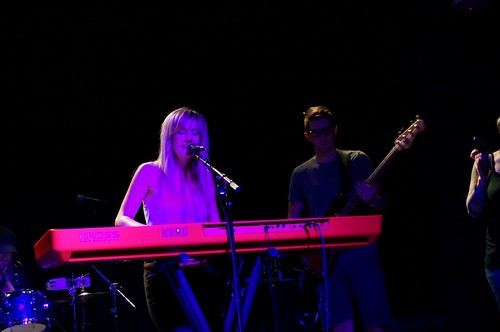

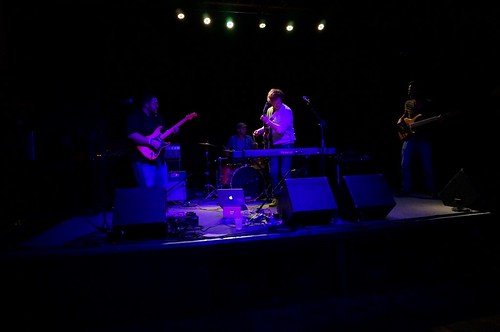
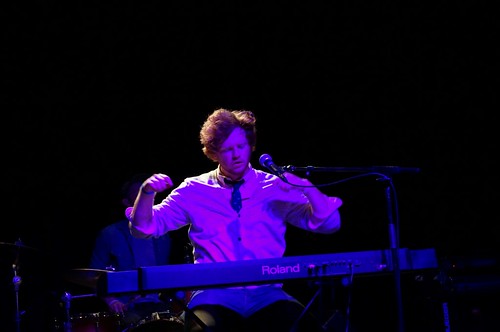
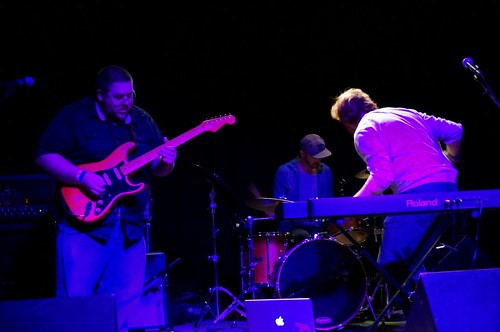

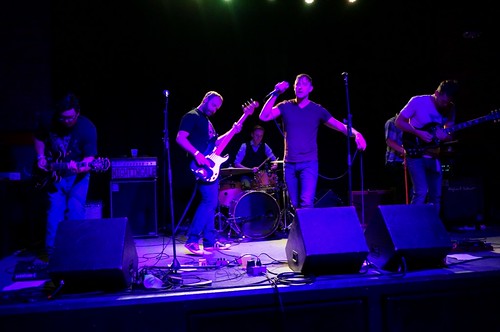
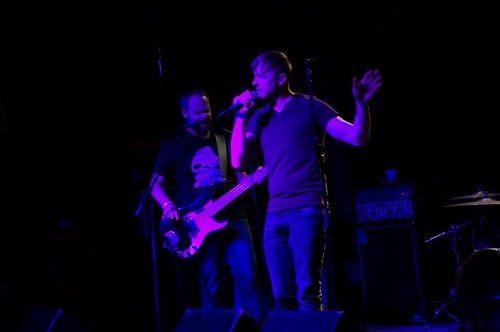

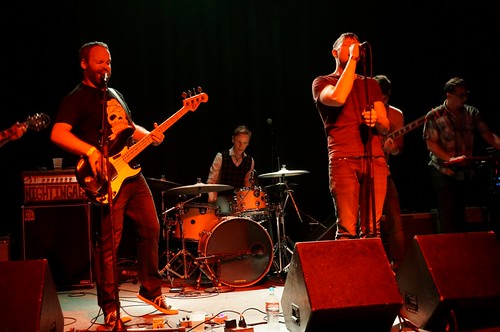

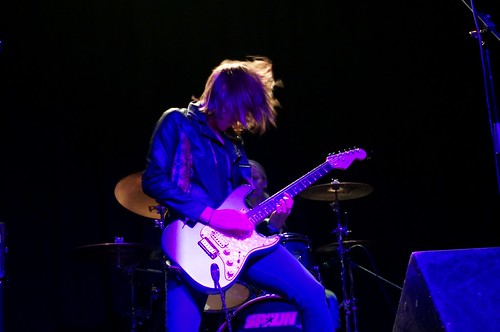

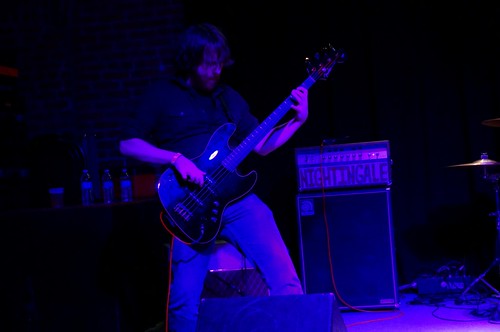
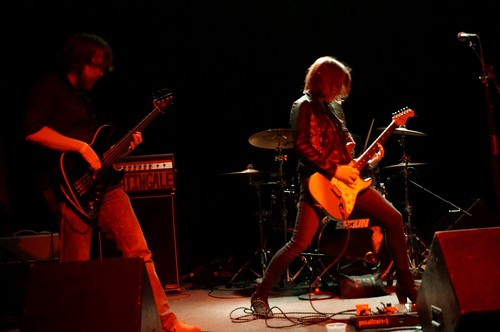
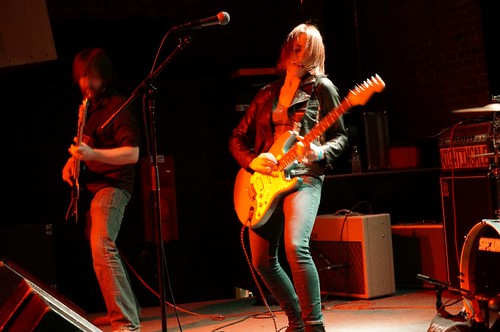
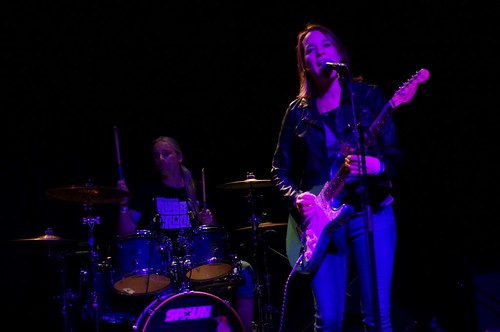
 Atists often treat their careers as metaphorical sharks; if they aren’t moving forward, they’ll suffocate and die. So they “broaden their direction,” they reinvent themselves or, if they’re particularly full of it, they “recontextualize their artistic statement.” Half the time that means that they only change the story around their music, but no one wants to admit that their groove may be just fine. The unspoken risk is that when an act does actually veer off into something surprising, they may jump the shark rather than ride it, but bands bow to pressure and take that chance all the time. Following that mindset, there’s a sense that we should look down on bands that merely settle.
Atists often treat their careers as metaphorical sharks; if they aren’t moving forward, they’ll suffocate and die. So they “broaden their direction,” they reinvent themselves or, if they’re particularly full of it, they “recontextualize their artistic statement.” Half the time that means that they only change the story around their music, but no one wants to admit that their groove may be just fine. The unspoken risk is that when an act does actually veer off into something surprising, they may jump the shark rather than ride it, but bands bow to pressure and take that chance all the time. Following that mindset, there’s a sense that we should look down on bands that merely settle.  Is older really wiser? By 1994, the angry, bitter young man of My Aim Is True, Next Year’s Model, and Armed Forces had long vented most of his vitriol. The year before,
Is older really wiser? By 1994, the angry, bitter young man of My Aim Is True, Next Year’s Model, and Armed Forces had long vented most of his vitriol. The year before,  Wye Oak eases into Shriek with the distracted track, “Before”. While the album’s title suggests strong emotions and a cathartic release, this opening song is curiously detached from all outside influences. The lyrics relate an amnesiac’s distracted and confused perspective, but lead singer Jenn Wasner is utterly unruffled. The steady beat of reality is held slightly at bay by the dreamy keyboard washes and serves as an apt setting for someone who feels like “I have never lived/ Or else forgot.” Robbed of expressive intensity, that clockwork rhythm still adds a tension that is never resolved within the confines of the piece. The title track follows, but any hope of resolution quickly fades. The tight indie pop loop offers airbrushed beauty rather than any kind of edge. The pretty sway of the music takes the sonic soul of Pink Floyd’s “Learning to Fly” and filters it through a synth pop sieve. The prickling sense of expectancy and possibility is softened, leaving an amorphous fluidity that offers no grasping point. There’s no question that Wasner’s full, lush voice is an improvement over David Gilmour’s, but, although Gilmour is not a particularly moving singer, he connects with his theme in a deeper way than Wasner can.
Wye Oak eases into Shriek with the distracted track, “Before”. While the album’s title suggests strong emotions and a cathartic release, this opening song is curiously detached from all outside influences. The lyrics relate an amnesiac’s distracted and confused perspective, but lead singer Jenn Wasner is utterly unruffled. The steady beat of reality is held slightly at bay by the dreamy keyboard washes and serves as an apt setting for someone who feels like “I have never lived/ Or else forgot.” Robbed of expressive intensity, that clockwork rhythm still adds a tension that is never resolved within the confines of the piece. The title track follows, but any hope of resolution quickly fades. The tight indie pop loop offers airbrushed beauty rather than any kind of edge. The pretty sway of the music takes the sonic soul of Pink Floyd’s “Learning to Fly” and filters it through a synth pop sieve. The prickling sense of expectancy and possibility is softened, leaving an amorphous fluidity that offers no grasping point. There’s no question that Wasner’s full, lush voice is an improvement over David Gilmour’s, but, although Gilmour is not a particularly moving singer, he connects with his theme in a deeper way than Wasner can.
 The guitar strings pop and tick like a cooling engine, hinting at long drives and endless roaming. The smell of hot blacktop seems to hang in the background of each of
The guitar strings pop and tick like a cooling engine, hinting at long drives and endless roaming. The smell of hot blacktop seems to hang in the background of each of